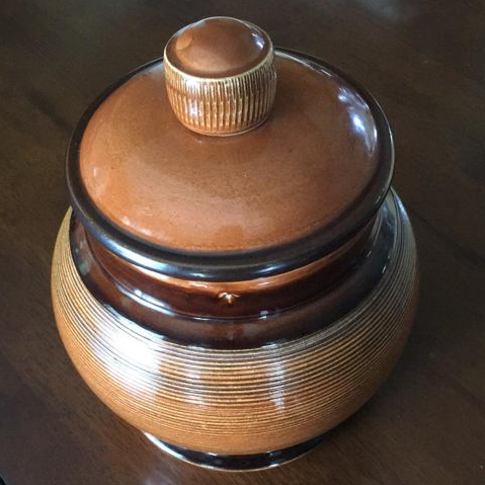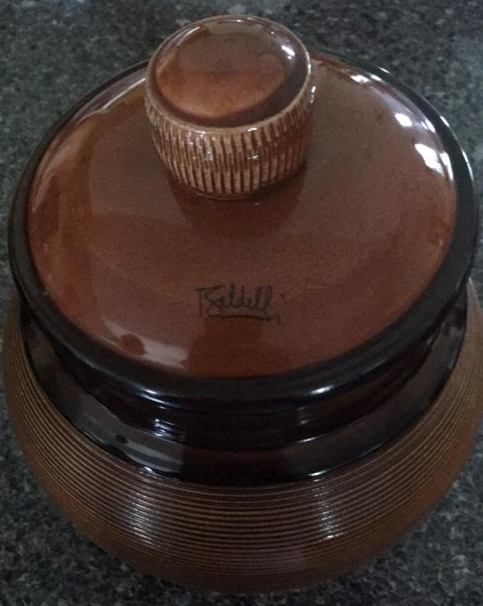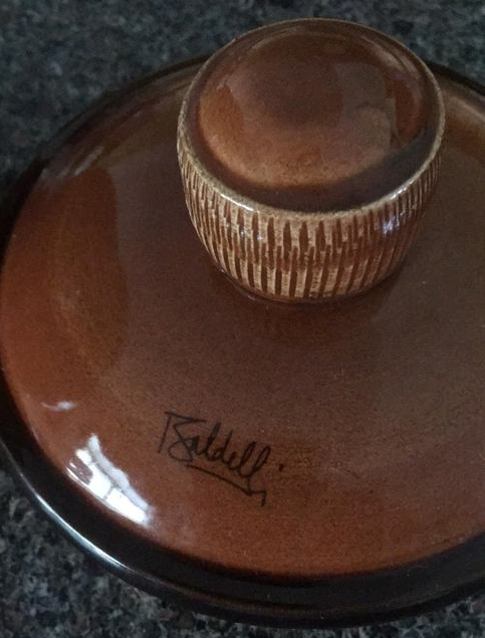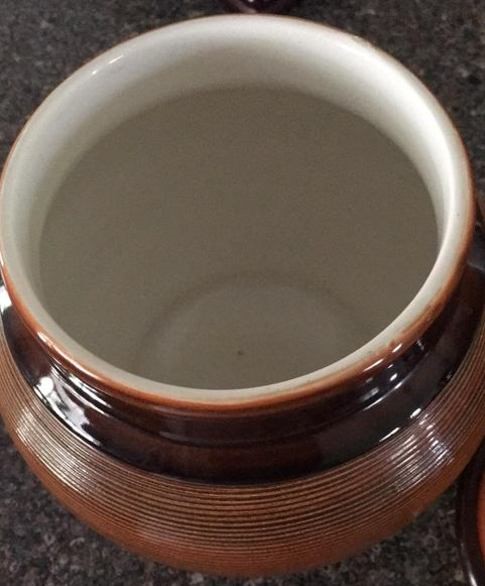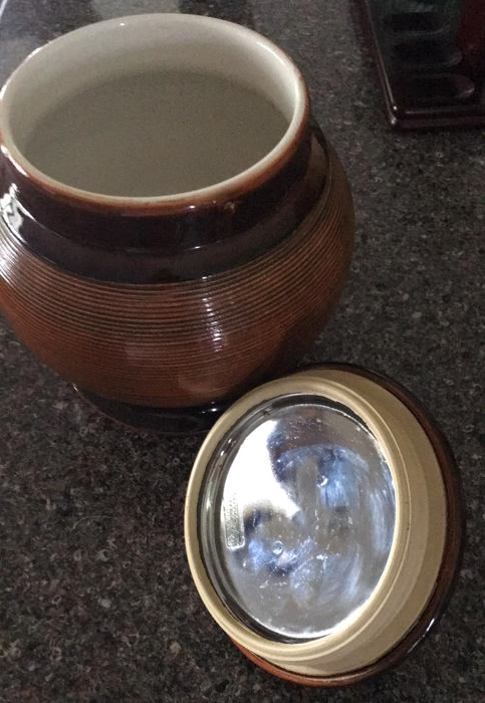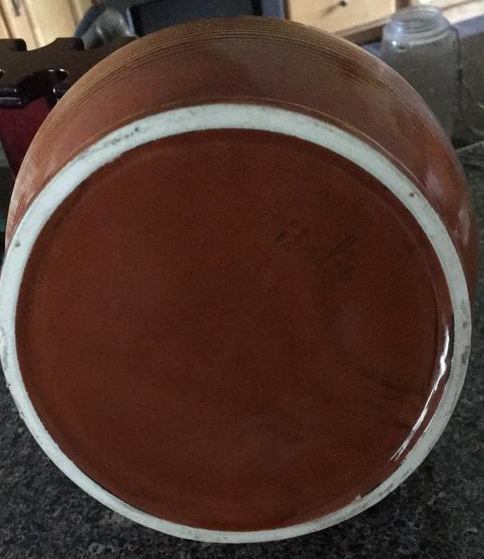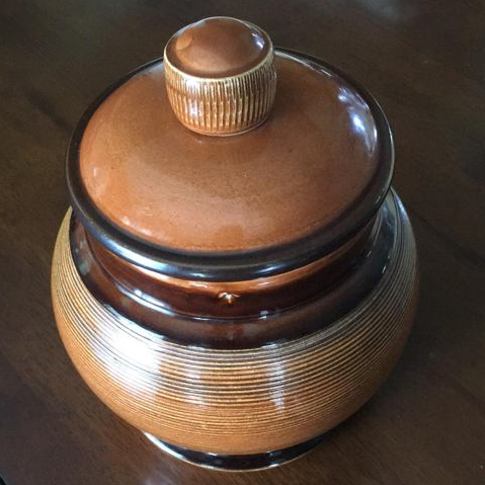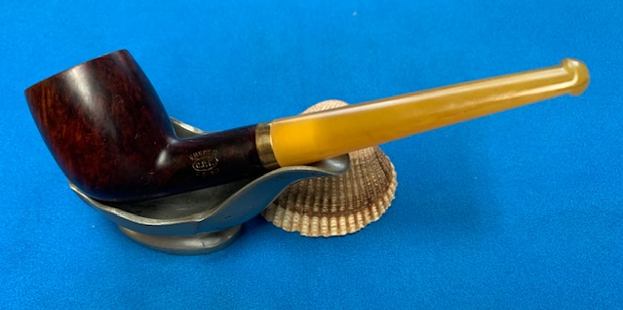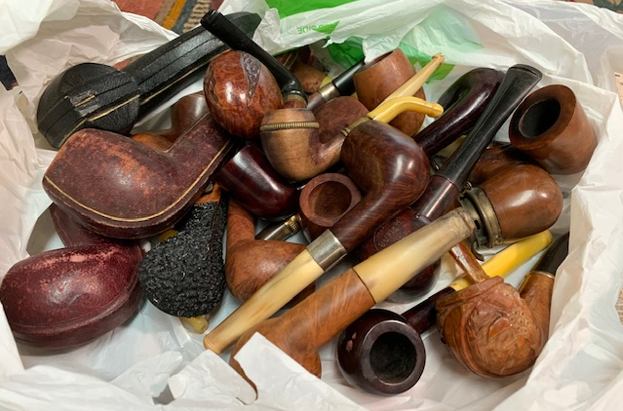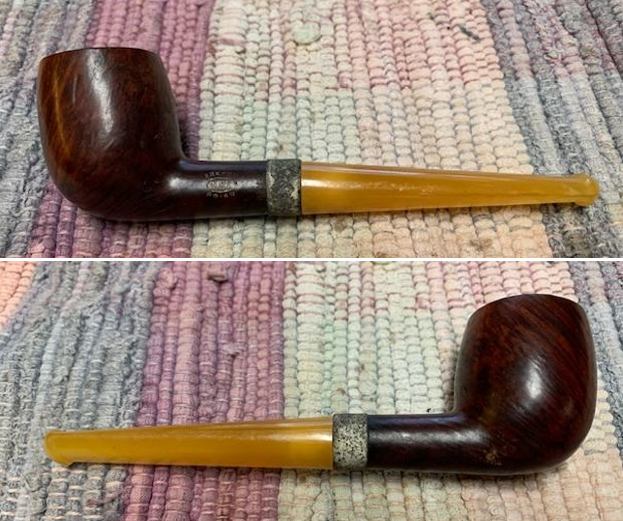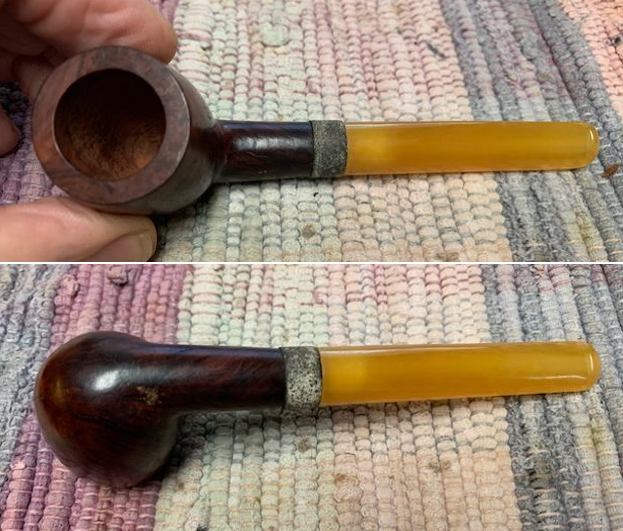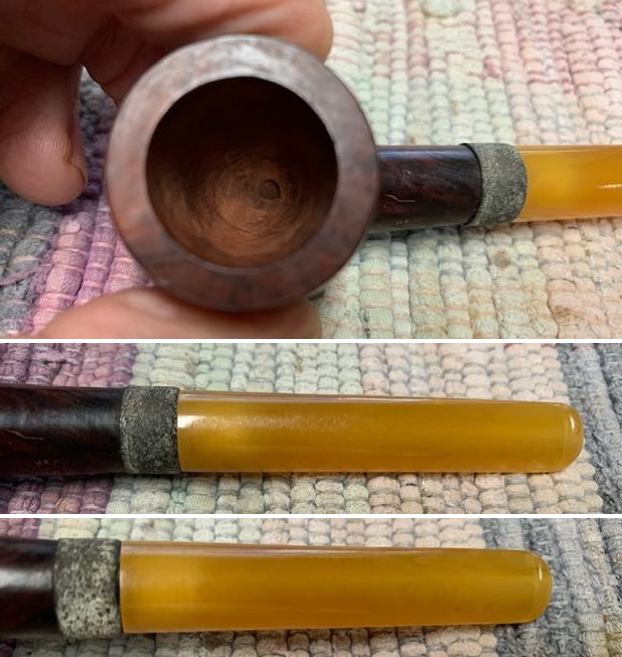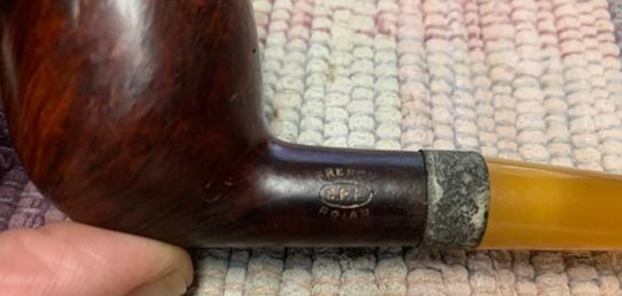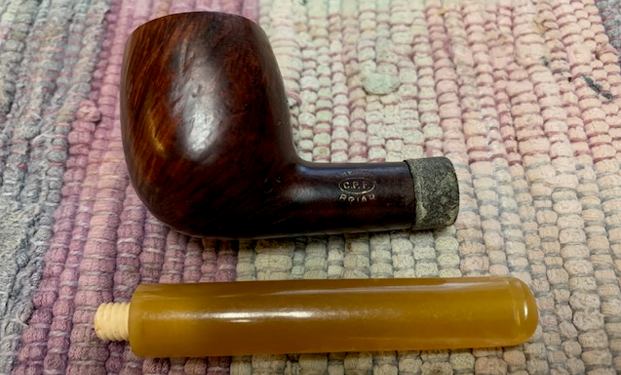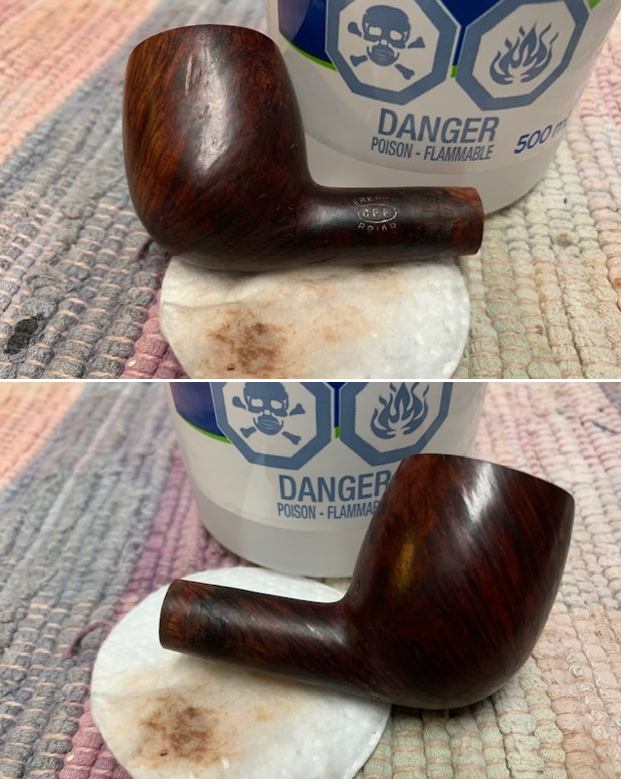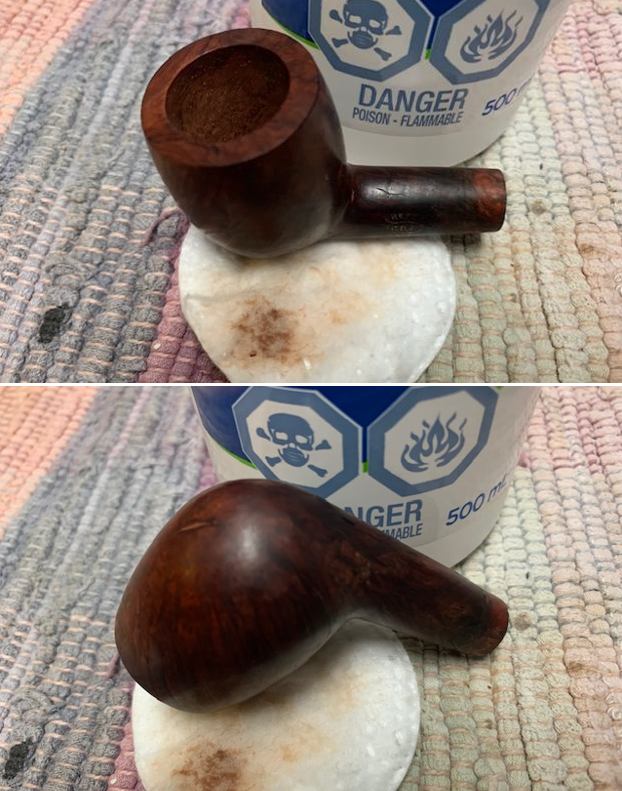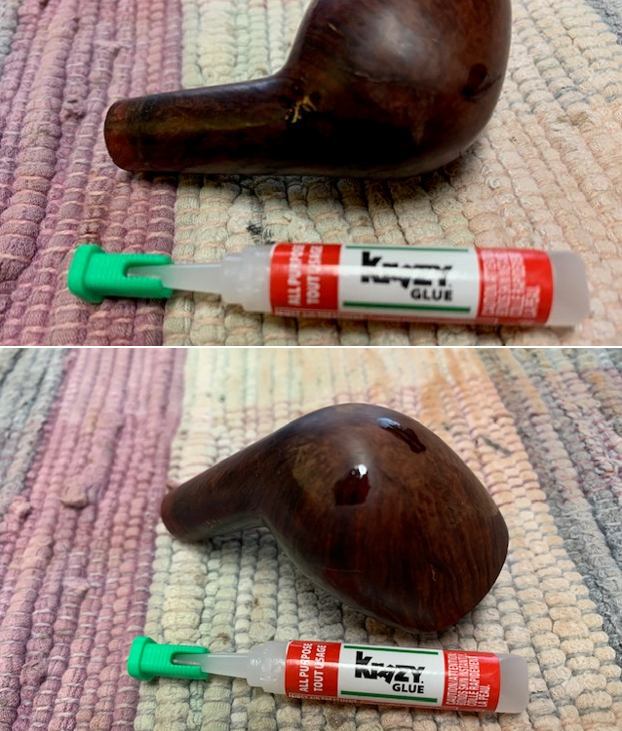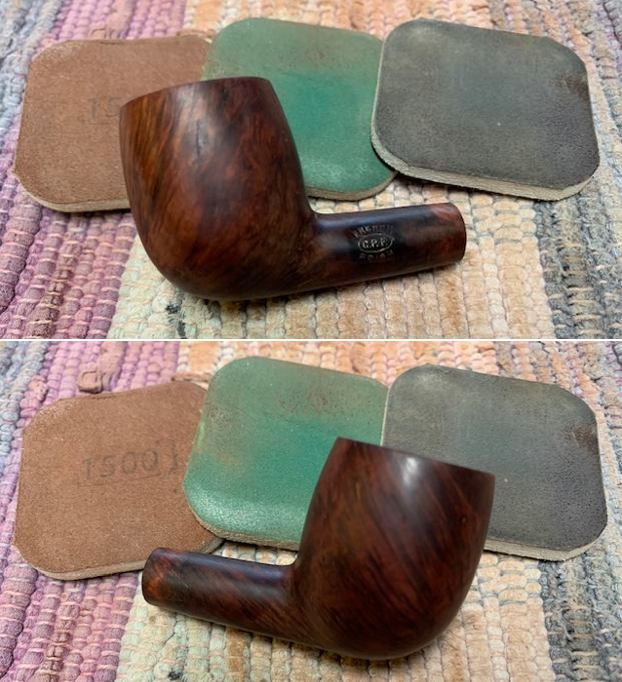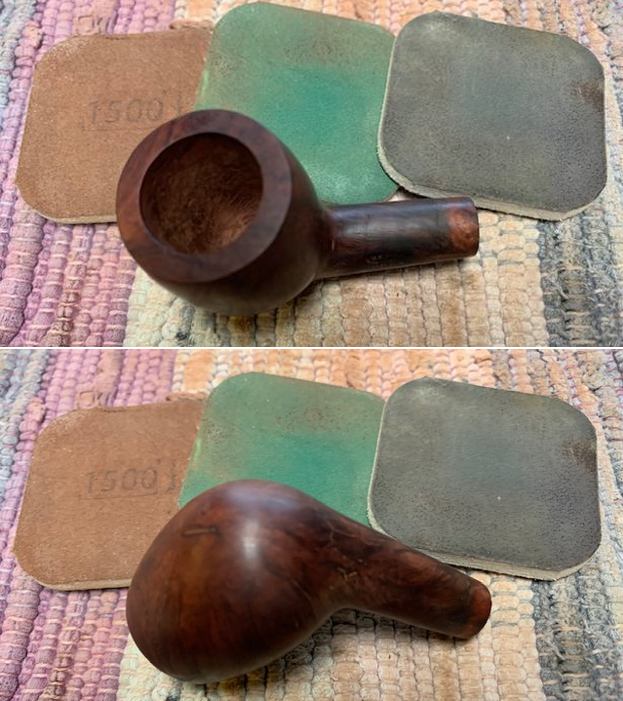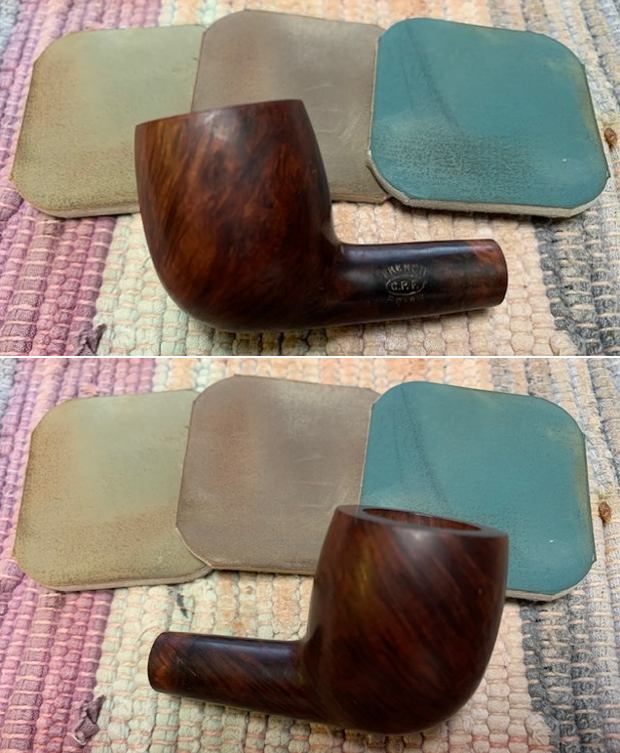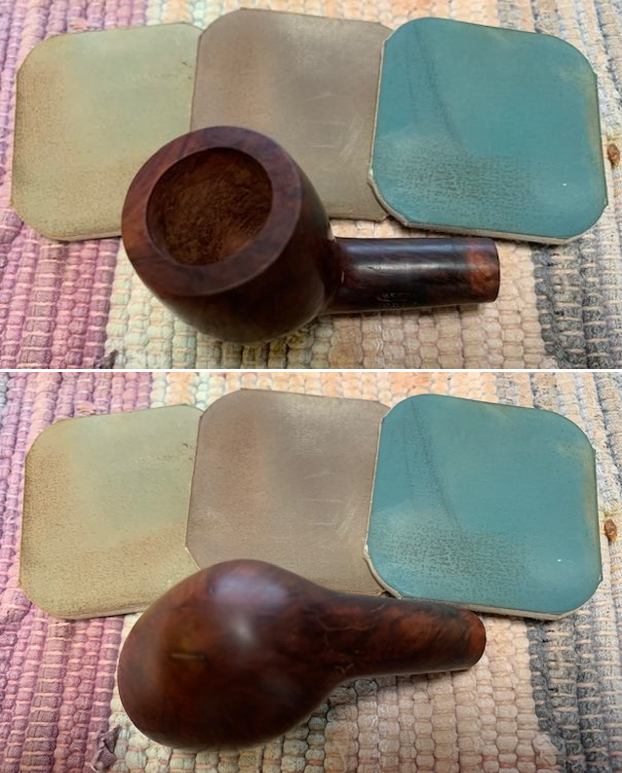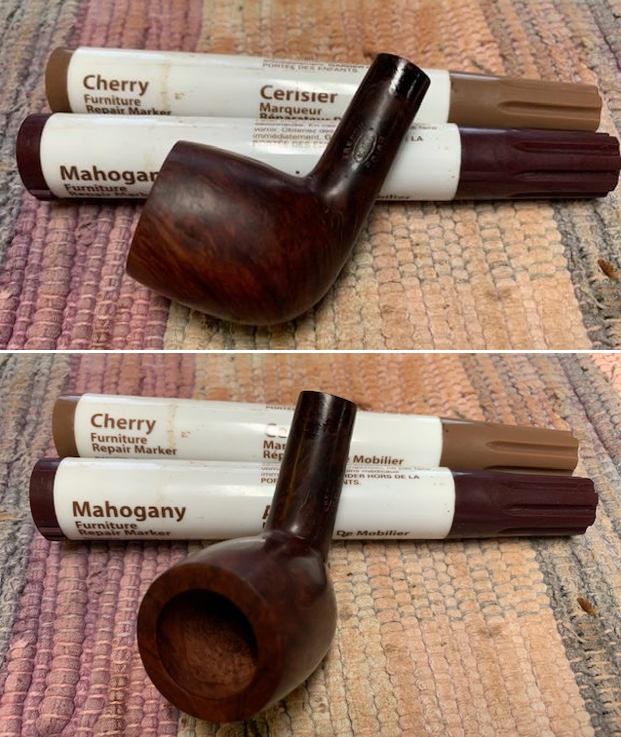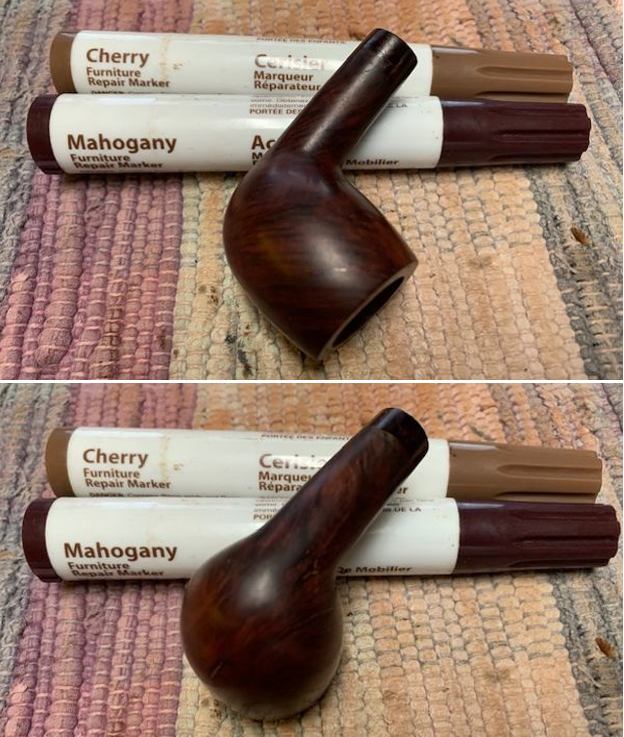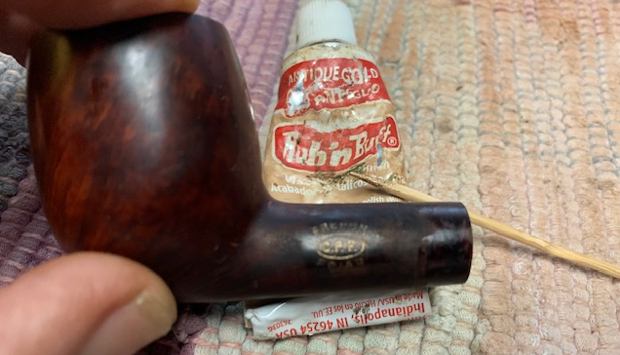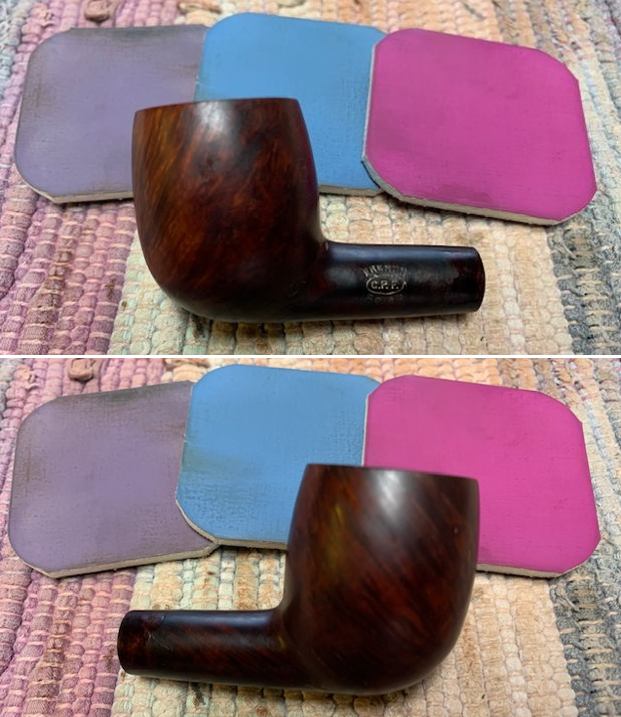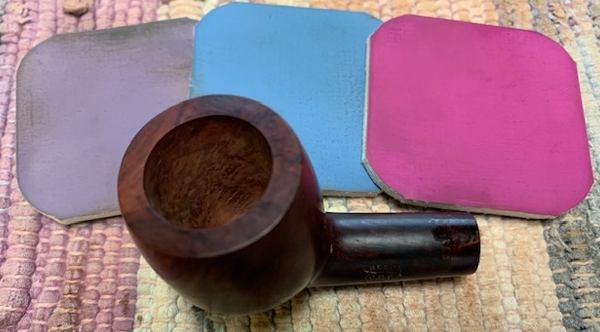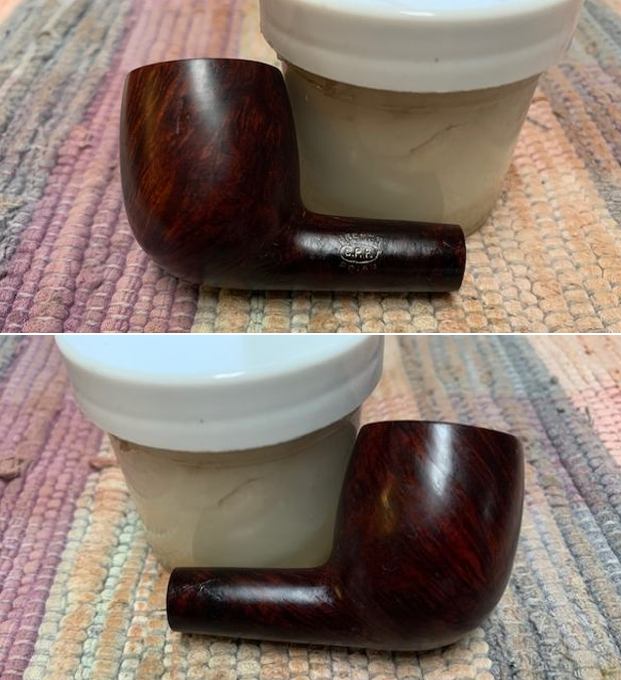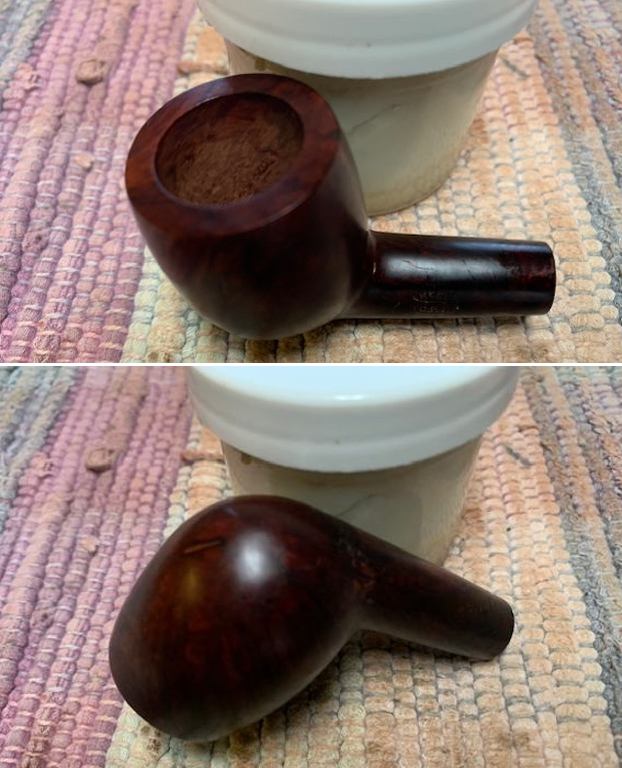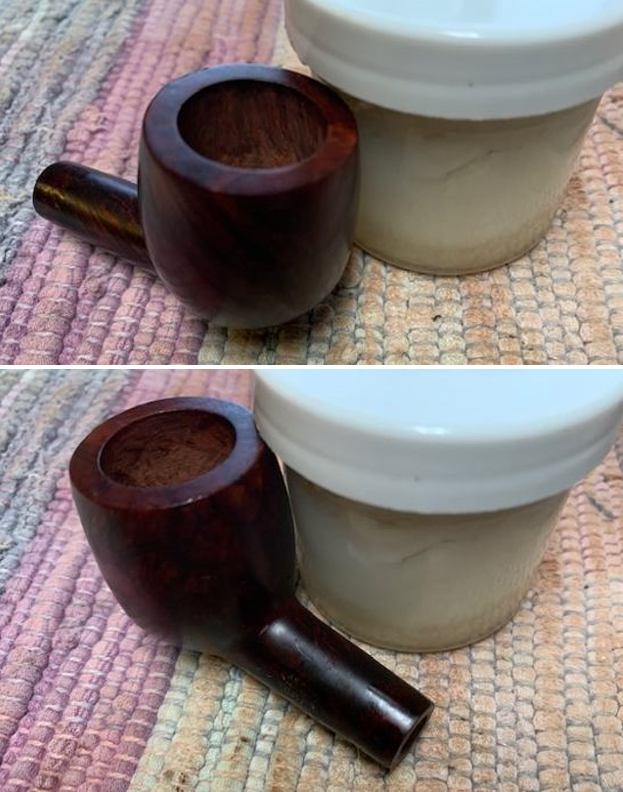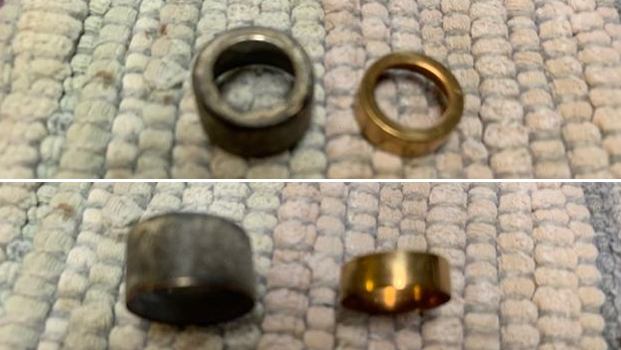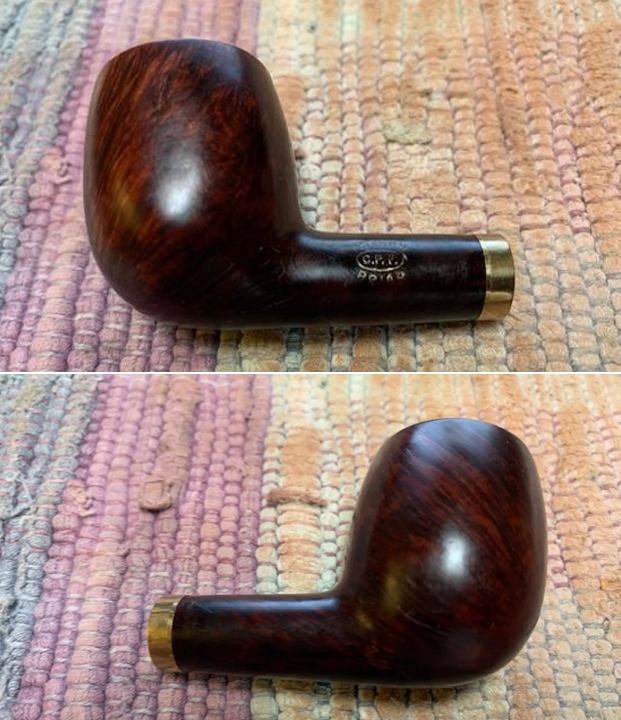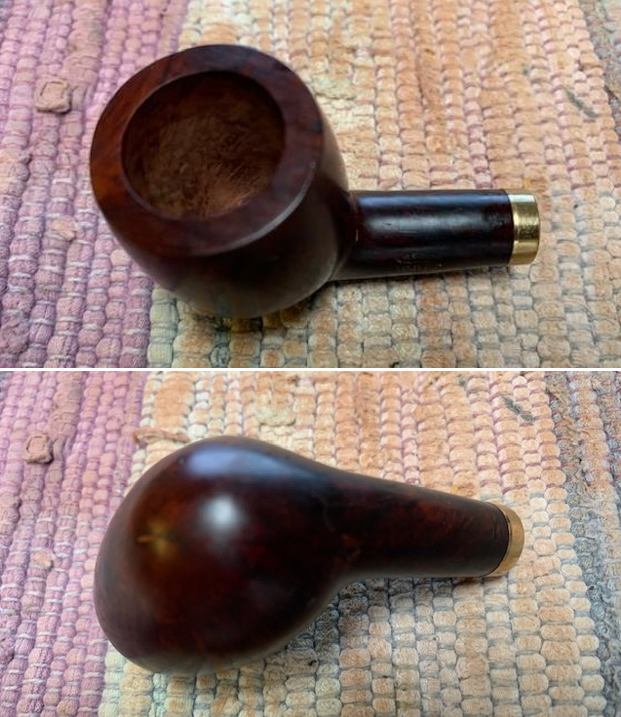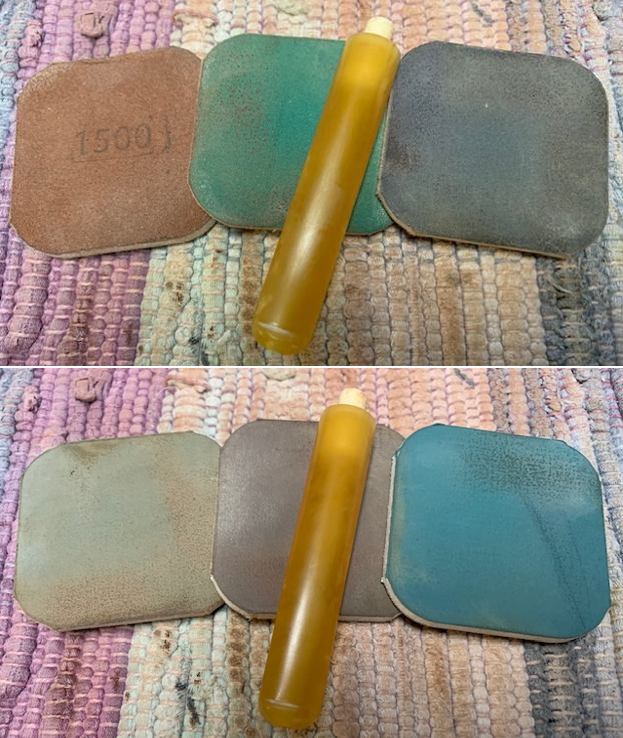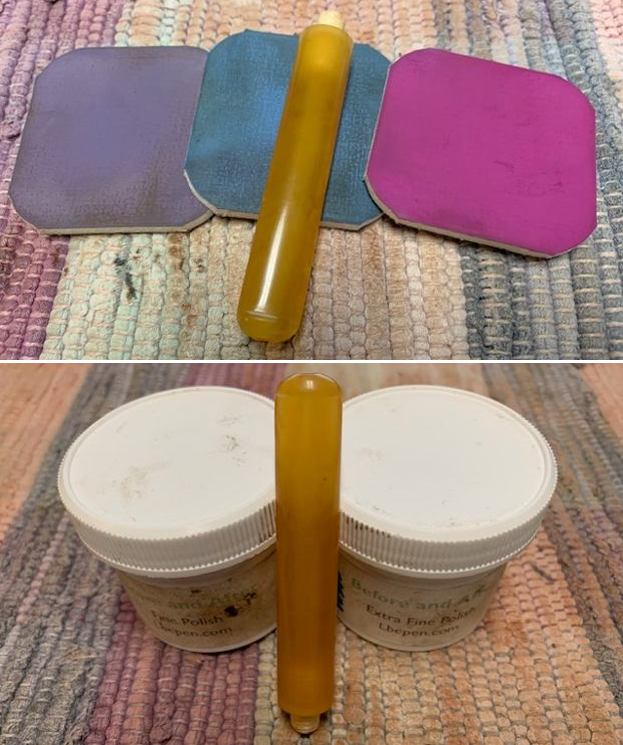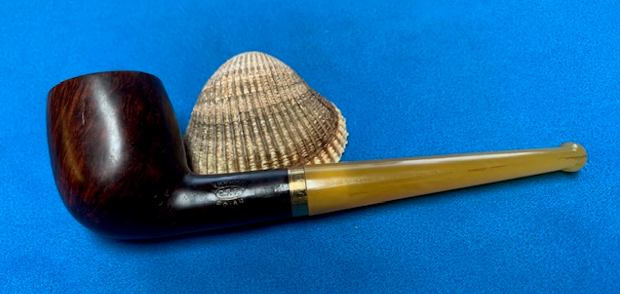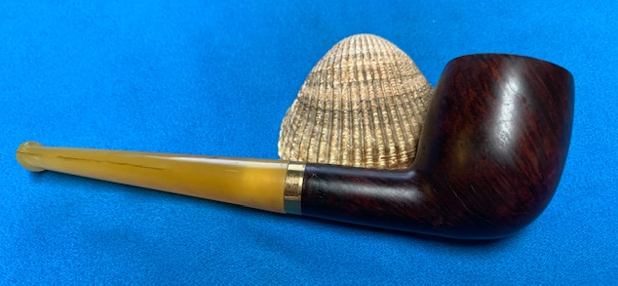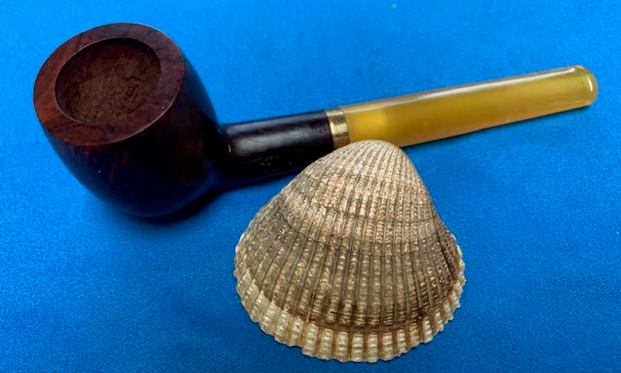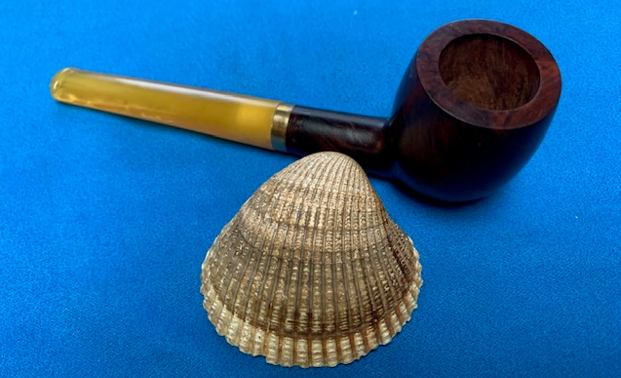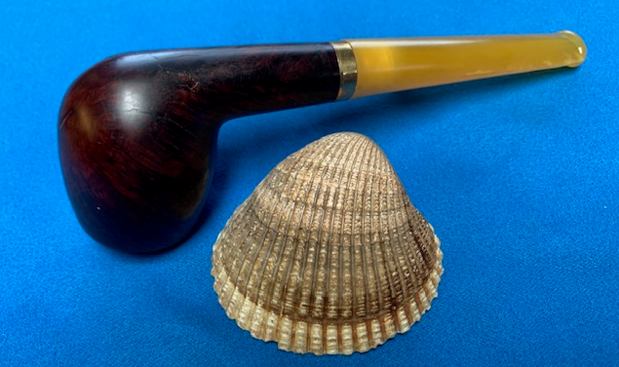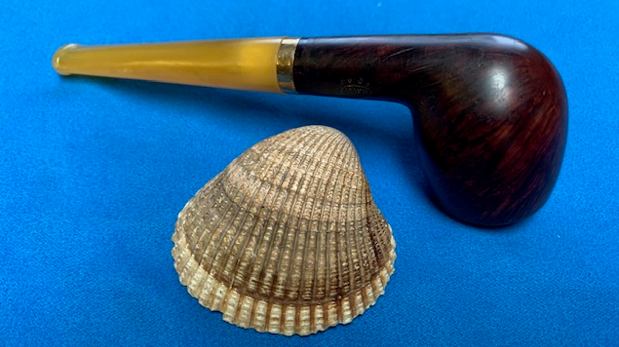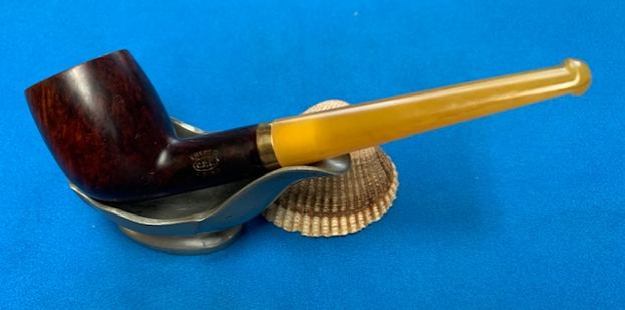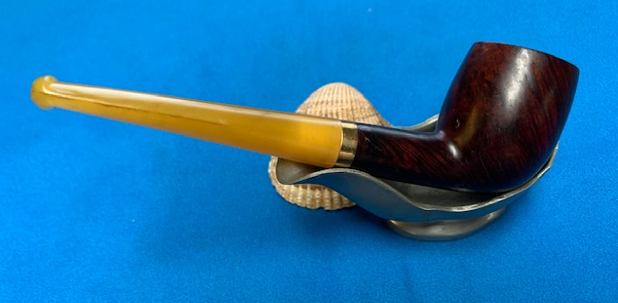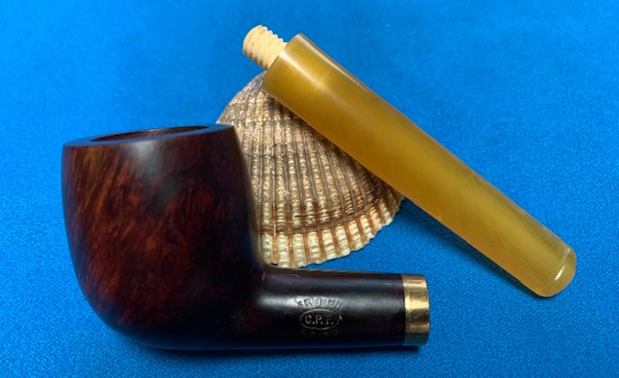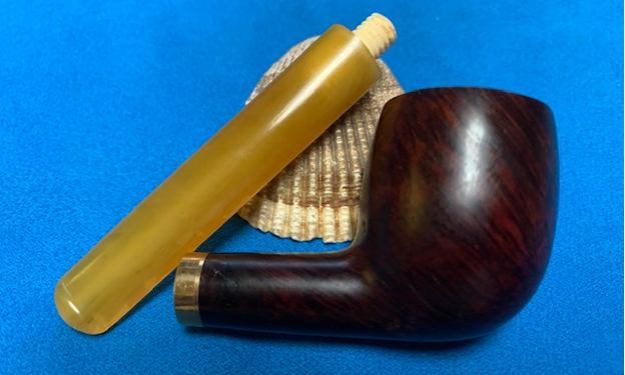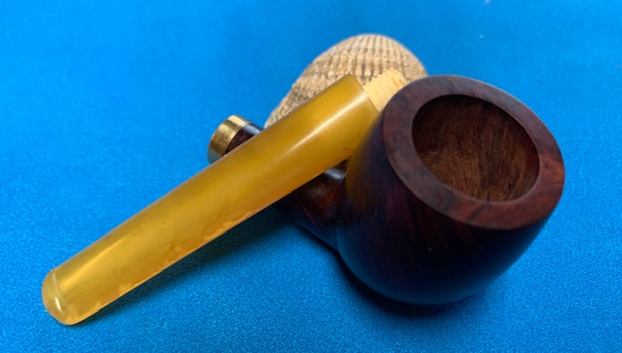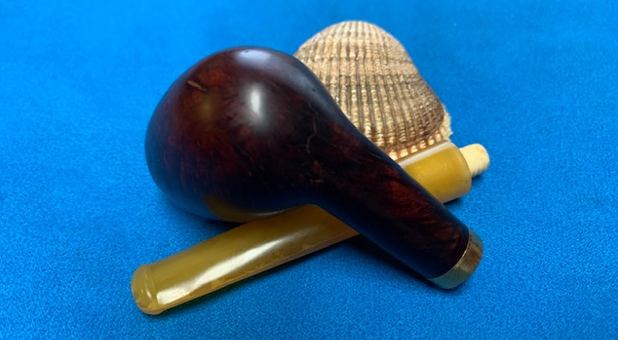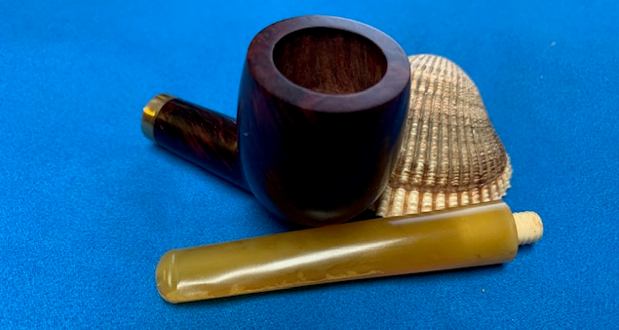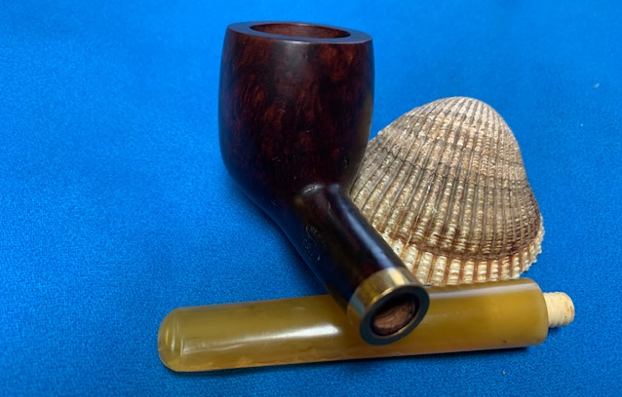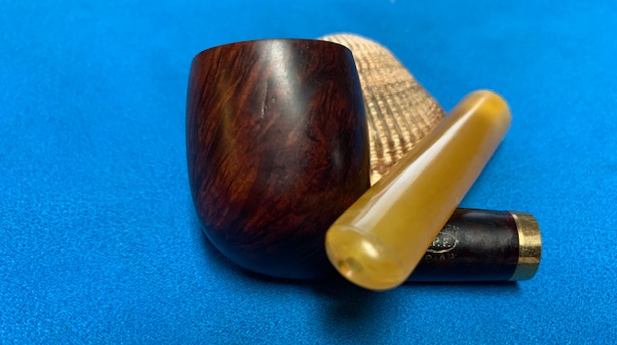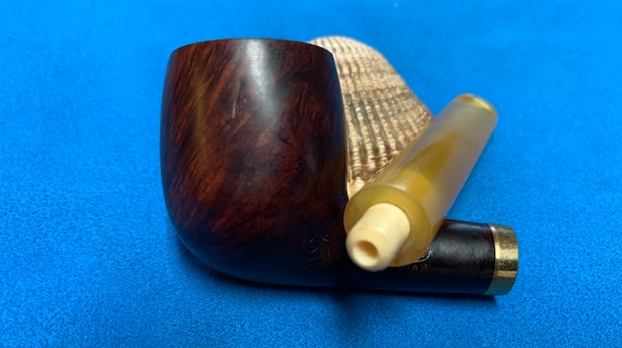Blog by Steve Laug
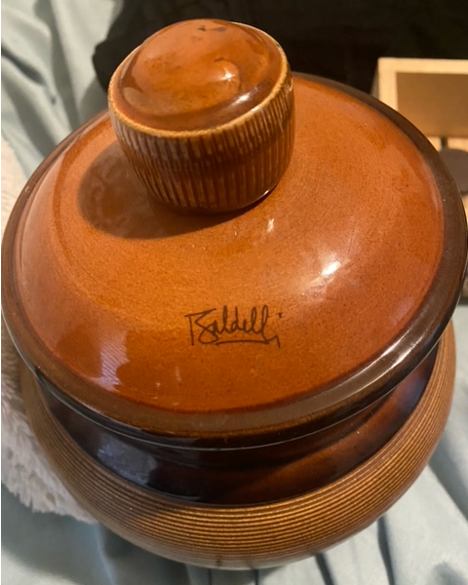 Jeff and I were contacted by a seller in California about some pipes she was selling and this ceramic tobacco humidor. She sent photos of the pipes and two photos of the humidor to me so that I could have a look at it. The first photos shows that it was marked Baldelli in script on the top of the humidor lid. The name did not mean anything to me. I know nothing about ceramics and humidor makers as I only have a few older no name ones and nothing like this one. It was made of ceramic and the round shape reminded me of an old cookie jar that I grew up with. It was a humidor that I wanted for my own collection. The second photo shows the seal on the inside of the lid along with a patent number from both the USA and Italy. The US Patent Number is 365568 and the Italian Patent Number is 47581A82. I looked under both numbers and could find nothing define what the patent applies to. My guess would be that it applies to the sealing mechanism on the lid of the jar.
Jeff and I were contacted by a seller in California about some pipes she was selling and this ceramic tobacco humidor. She sent photos of the pipes and two photos of the humidor to me so that I could have a look at it. The first photos shows that it was marked Baldelli in script on the top of the humidor lid. The name did not mean anything to me. I know nothing about ceramics and humidor makers as I only have a few older no name ones and nothing like this one. It was made of ceramic and the round shape reminded me of an old cookie jar that I grew up with. It was a humidor that I wanted for my own collection. The second photo shows the seal on the inside of the lid along with a patent number from both the USA and Italy. The US Patent Number is 365568 and the Italian Patent Number is 47581A82. I looked under both numbers and could find nothing define what the patent applies to. My guess would be that it applies to the sealing mechanism on the lid of the jar. I did a quick Google search on the Baldelli Ceramics name to see what I could learn on the net. I found a link on Wikipedia (https://en.wikipedia.org/wiki/Baldelli_ceramics). It gave a brief article on the brand and the family that made the ceramics. I quote it in full below.
I did a quick Google search on the Baldelli Ceramics name to see what I could learn on the net. I found a link on Wikipedia (https://en.wikipedia.org/wiki/Baldelli_ceramics). It gave a brief article on the brand and the family that made the ceramics. I quote it in full below.
Baldelli ceramics have been made by Ceramiche Baldelli in Città di Castello, near Perugia, Italy, since 1943.
The Baldelli family have been making ceramics for four generations. Ceramist Dante Baldelli (1904-1953), a ceramist working since the 1920s, who became the director of Ceramica Rometti di Umbertide,[1] opened his own workshop in 1943, in piazza Gioberti, Città di Castello, accompanied by his brother Angelo and gradually assisted by his oldest son Massimo, who was eight at the time[2] but who took over the business at the unexpected death of his father in 1953, aged eighteen; under his leadership production was being sold in US department stores from the 1970s.
During the 1980s, Massimo Baldelli’s daughter Simona and her husband Lorenzo Colacicchi joined the family business.[3]
In the early 1990s the Baldelli studio resited to the country outside Città di Castello.
When it arrived Jeff took photos and sent them to me. We debated putting it on the rebornpipes store but the more I looked at the photos the more I wanted to reserve it for myself. That may change once I have it in hand but for now I am looking forward to having a look at it once we can cross the US border again and spend some time with them.
Oh… and just for those who are curious here are the dimensions of the humidor: the diameter of the bottom of the humidor is 5 ½ inches and the height is 8 inches. It is a good sized humidor and the internal seal really is fascinating to me. Here are those other photos.